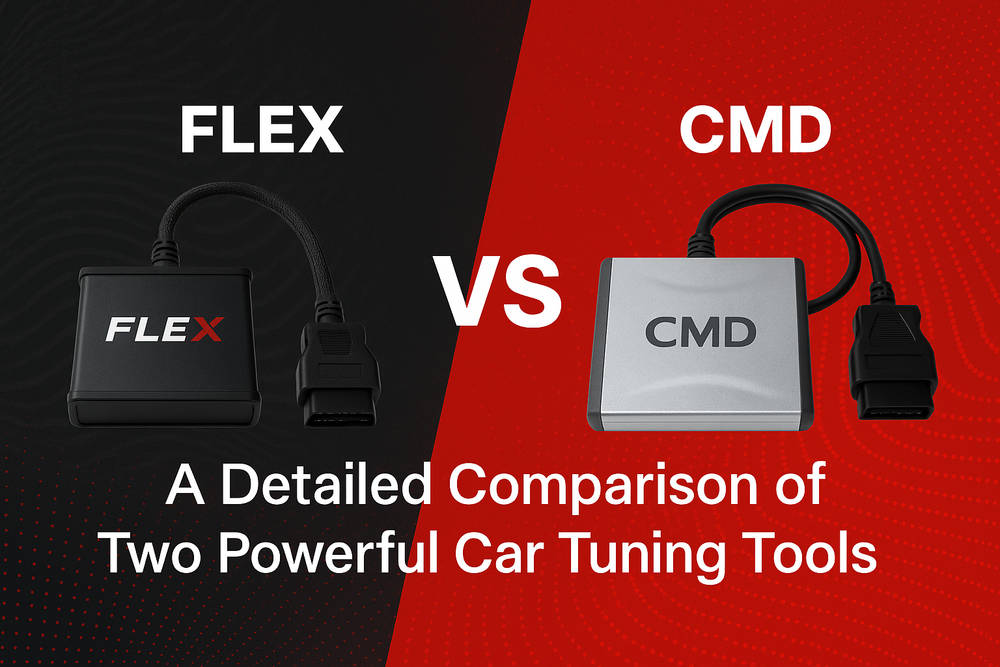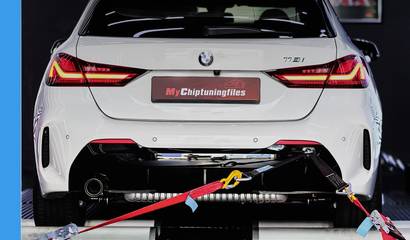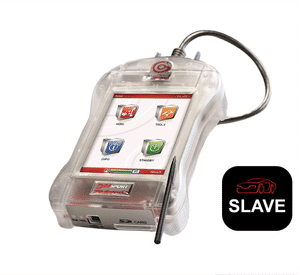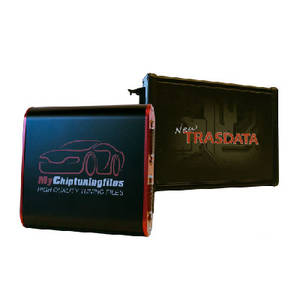Sunday 16 November

We guess, you’re either new to tuning and trying to pick your first tool, or maybe you’re already working with one system and wondering if you should’ve gone the other way. Either way, the whole Flex vs. CMD debate is something tuners have been bouncing around for a while. And honestly, it’s not as black-and-white as some folks like to pretend. Both tools are solid, no doubt. But they’ve got differences that matter depending on how and what you tune.
So, this post is going to break it all down - not from the marketing fluff perspective, but from a hands-on, been-there, used-it point of view. We’ll talk about features, support, real-world use, quirks, and just the general vibe of working with Flex and CMD.
Grab a coffee or a greasy sandwich - this might be a long one.
Quick Intro: What Are These Tools Anyway?
Let’s cover the basics real fast.
Flex is a tool made by Magic Motorsport. It’s newer than CMD and is built to work with a range of ECUs using OBD, Bench, and Boot modes. It’s known for being pretty slick, easy to update, and very focused on usability.
CMD Flash (usually just called CMD) is from Flashtec, and it's one of the oldest names in the tuning tool game. It’s got a loyal following and a rep for being super stable and solid. CMD is often the tool folks trust when it comes to reading and writing high-risk ECUs, especially when you really, really don’t want to brick anything.
Both of these tools read and write ECU files, both have decent coverage, and both cost a good chunk of money. So the question really becomes - which one fits your workflow best?
Also Read: Dimsport vs. Autotuner: Which Tuning Tool Should You Choose in 2025?
Interface & Usability: Flex Is Slick, CMD Is… Functional
Let’s talk about actually using the tools.
Flex has a very modern interface. You plug it in, open up the Flex software, and it walks you through everything step-by-step. The GUI is clean. You get pictures of where to connect the wires, diagrams, and a live log of what the tool is doing. It’s built for tuners who maybe don’t want to memorize pinouts and wiring diagrams from some PDF buried deep in a folder.
Flex also updates itself automatically, and the software feels alive - like the dev team is constantly pushing changes. That’s good and bad. Good because you get new features. Bad because, yeah, sometimes an update breaks something.
CMD, on the other hand, is old-school. The interface is straight to the point. No fancy animations, no hand-holding. Just a dropdown to pick the ECU, click read or write, and off you go. It’s fast, it’s stable, and it doesn’t try to impress you with graphics. But if you’ve never used it before, you’ll probably be Googling more than a few connection guides.
In terms of comfort and ease-of-use? Flex wins here. But for seasoned tuners who just want something solid and don't care about visuals, CMD still holds up fine.
Protocol Coverage: Who Reads What?
Here’s where it gets more serious - because no matter how nice the software looks, if it doesn’t support the ECUs you work on, it’s useless.
Flex has been catching up fast. It supports a wide range of Bosch ECUs, Delphi, Denso, Siemens, and Continental, across both petrol and diesel. It works with a lot of European cars, some Asian models, and even a few American ones.
It supports:
- OBD mode for many ECUs
- Bench mode (no need to open the ECU in many cases)
- Boot mode for deeper access when needed
CMD has always been praised for stability, especially with OBD protocols. It’s one of the safest tools to use over OBD for many Bosch EDC and MED ECUs. It also has excellent checksum support. However, CMD doesn’t support Bench mode. If you’re dealing with newer ECUs that block OBD access, you’re gonna have to open the ECU and go full boot mode or use a second tool.
So protocol-wise:
- If you’re only doing OBD and want ultra safety - CMD is great.
- If you need Bench and want more flexibility - Flex is probably better.
- For Boot mode - both tools can handle it, but Flex is more geared toward helping less-experienced users with guides and graphical help.
Safety & Stability: CMD Is Still the King Here
Let’s be honest. Bricking an ECU is a nightmare. Whether it’s a customer car or your own, nobody likes trying to recover a dead ECU because a flash failed halfway.
CMD has a long-standing rep for being rock-solid. It’s what a lot of master tuners go for when reliability is absolutely critical. The software doesn’t crash randomly, and CMD’s checksum handling is top-notch. That’s a big reason why some tuners refuse to use anything else for OBD.
Flex, while really good and improving fast, sometimes gets a bit of heat for being a little more “beta” at times. Especially early on, people reported the occasional software crash or ECU compatibility bug. To be fair, most of those issues are ironed out fast - the support team jumps on things - but CMD has that legacy of trust.
So if you’re the type that tunes high-stakes ECUs and values absolute safety over new features? CMD’s probably still your guy.
Update Frequency & Development
Flex wins this one, hands down.
The devs over at Magic Motorsport are on it. Updates roll out regularly - sometimes every couple of weeks. They’re constantly adding protocols, improving speed, and fixing stuff.
CMD, well… updates are slower. Some say the tool hasn’t really changed much in years. That’s not a bad thing if it already works perfectly for your use case, but if you’re looking for new protocols or newer ECU support, Flex is more aggressive about staying ahead.
So:
- Want the most up-to-date support for newer ECUs? Flex.
- Want stability over new stuff? CMD.
Bench & Boot Mode: Flex Pulls Ahead
One of Flex’s biggest selling points is the Bench mode.
This lets you read/write ECUs on the bench without opening them up. That’s a huge deal. It saves time, lowers the risk of damaging the PCB, and just makes your life easier. For ECUs that support it, Bench is way better than Boot.
CMD doesn’t have Bench mode. You either go OBD or you open up the ECU and wire it up for Boot. That’s it.
So if you're working with ECUs like MD1 or MG1 that often block OBD but allow Bench reads, Flex is your go-to.
Licensing, Costs & Subscriptions
Alright, let’s talk money - cause neither of these tools are cheap.
Flex has a modular pricing system. You pay for the hardware, then subscribe to the protocols you need. Want OBD only? You can get that. Need Boot and Bench too? Add them. It makes the cost scale with your needs. And when the subscription ends, you can still use the tool - just no new updates or support.
CMD has a higher upfront cost, but no subscription required. You pay once, and that’s it. Updates are free (when they happen), and there’s no annual fee breathing down your neck.
So the breakdown:
- Flex is cheaper to start, but needs ongoing subscriptions if you want updates.
- CMD is more expensive upfront but zero running costs.
Depends on how you prefer to manage your budget.
Also Read: Turbocharging vs. Supercharging: Which Tuning Method is Best for Your Car?
Technical Support & Community
Flex has a responsive support team. You can contact them directly, and they usually get back pretty quick. Plus, because Flex is newer and a bit more user-friendly, there are tons of guides, YouTube videos, and Facebook groups filled with info.
CMD’s support is… alright. It’s not bad, but it’s also not super beginner-friendly. You’re expected to know what you’re doing. Also, because the tool has been around longer, some of the community knowledge is buried in old forums rather than easy-to-access tutorials.
So if you like having a support net and a helpful online community? Flex is easier to learn with.
Real-World Use Cases
Here’s how it usually plays out in the wild.
- CMD is a favorite for shops doing high volumes of OBD tuning - especially on European diesels like VAG, BMW, and Mercedes. It’s safe, it’s fast, and it just works.
- Flex is the go-to for guys doing a mix of OBD, Bench, and Boot work. Especially useful if you’re opening up newer ECUs or working with MD1/MG1 or similar. It’s more flexible (yeah, pun intended).
Plenty of tuners actually use both. CMD for quick OBD jobs. Flex for anything that needs deeper access or Bench mode.
Start Smart: Start a Chiptuning Business with a Trusted Partner
Thinking of entering the world of ECU tuning? Now is the perfect time to start a chiptuning business, and MyChiptuningfiles is here to guide you every step of the way. Whether you're an auto professional or a beginner looking to turn your passion into a business, we provide the tools and support you need to succeed.
Our team of experts creates custom ECU tuning files using advanced software like WinOLS. Each file is thoroughly tested to improve engine power, torque, and fuel efficiency—without compromising safety. You don't need to be a technical expert. Simply upload the original ECU file, and we’ll return a precisely tuned version tailored to your client’s vehicle.
MyChiptuningfiles serves tuning professionals and startups around the globe. We offer quick turnaround, expert support, and a user-friendly platform, helping you provide top-tier tuning services right from the beginning.
We’re committed to your growth. When you work with us, you’re not just accessing tuning files—you’re building a business with confidence, backed by quality and experience.
Let’s make your tuning business a reality. Start a chiptuning business with MyChiptuningfiles and bring reliable performance upgrades to drivers who demand more.
Final Verdict: So… Which Should You Choose?
Here’s the truth - it depends on your setup, your experience level, and what kind of work you’re doing.
Go with Flex if:
- You’re new and want a more guided experience.
- You need Bench mode support.
- You like frequent updates and growing protocol support.
- You want flexibility with subscriptions and cost.
Go with CMD if:
- You need ultimate safety and reliability in OBD.
- You’re already working in a high-volume tuning shop.
- You’re okay with fewer updates but rock-solid performance.
- You want to pay once and not worry about subscriptions.
Honestly? If you can afford it - get both. They cover different strengths. CMD gives you that stability for day-to-day OBD work. Flex gives you the tools to crack open tougher ECUs and push into newer territory.
Either way, both tools are good. Just know what you’re getting, and how it fits your style.
Need help choosing? Already using one and considering switching? Let me know - always happy to talk about tuning tools without the sales talk.
Let’s keep it real.
news.related_news
Chiptuning tools
Whether you own a car, truck or tractor: we have the best equipment and software for tuning your petrol and diesel engine. With our chiptuning tools it is possible to easily read out the original engine software of your vehicle and upload it to our website. And then it's up to us to provide you with high-quality and customized chip tuning files. Curious about our range of chiptuning tools? Check it out via the button below!









